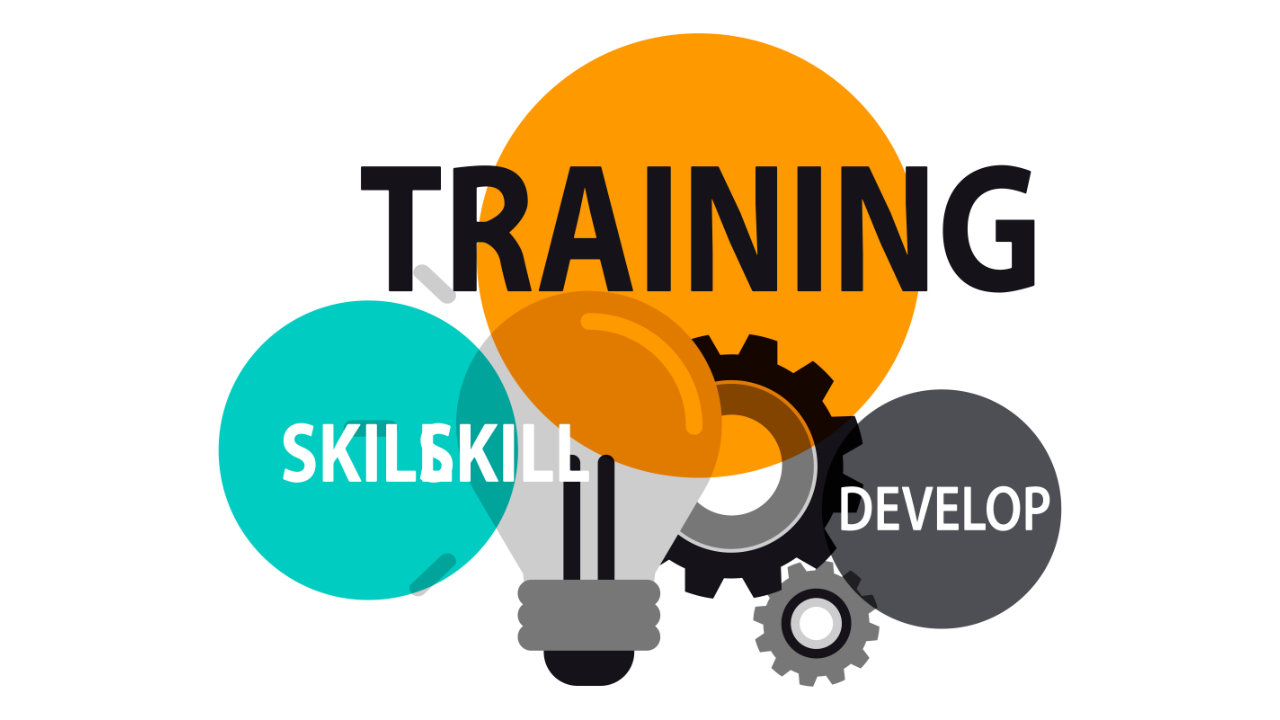A new survey shows that skill building is becoming common practice, social and emotional skills are in demand, and there’s a recipe for successful skill transformations.
In the past year, the COVID-19 pandemic has quickly and dramatically accelerated the need for new workforce skills. The rapid rise of digitization and remote work has placed new demands on employees who, in many instances, now require different skills to support significant changes to how work gets done and to the business priorities their companies are setting. Also required: help from their employers to develop the skills that will make the overall business, and its individual employees, future-ready.
In our newest McKinsey Global Survey on reskilling, the urgency of addressing skill gaps is clear—and, across industries, more important than ever to do. Most respondents say that skill building (more than hiring, contracting, or redeploying employees) is the best way to close those gaps and that they have doubled down on their efforts to reskill or upskill employees since the pandemic began. The results also point to a shift in the most important skills to develop, which tend to be social and emotional in nature: for example, empathy, leadership, and adaptability. But regardless of the skills involved, we also found that there is a clear recipe for success with skill transformations, which are large-scale, programmatic efforts to support skill building so that employees can adapt to fundamentally changing requirements of their current role or move into a new one. When companies follow all nine practices that support a skill transformation—for example, assessing the demand and need for specific skills in the future, designing a portfolio of initiatives to close skill gaps, and launching an organizational structure that is dedicated to learning—the odds for success are nearly guaranteed.
During the pandemic, companies have made a significant shift toward skill building
The survey suggests that the need to address skill gaps is more urgent than ever. A majority of respondents (58 percent) say that closing skill gaps in their companies’ workforces has become a higher priority since the pandemic began. And of five key actions to close these gaps—hiring, contracting, redeploying, releasing, and building skills within the current workforce—skill building is more prevalent now than it was in the run-up to the pandemic. Sixty-nine percent of respondents say that their organizations do more skill building now than they did before the COVID-19 crisis, a much more dramatic increase than they report for the other four actions. This finding is also consistent with organizations’ predictions from our previous survey on skilling before the pandemic began.
Redeploying talent to new roles—which often requires some degree of skill building—has also become more commonplace over the past year. Forty-six percent of respondents report an increase in redeploying talent at their organizations, which makes it the second most critical activity for closing skill gaps.
Additionally, the results suggest that this commitment to skill building represents more than a one-time investment. More than half of respondents say that their companies plan to increase their spending on learning and skill building over the next year, compared with their investments since the end of 2019.
Skill-building efforts have focused on ‘softer’ and advanced cognitive skills
The survey asked about 25 specific skills that companies have prioritized to address through reskilling, and more than half of respondents report a focus on developing leadership, critical-thinking and decision-making, and project-management skills. Compared with the results from 2019, many of the skills where respondents report the biggest increases in focus fall into two categories: social and emotional skills (which account for three of the five biggest increases) and advanced cognitive skills. For example, the share saying that their companies are addressing interpersonal skills and empathy skills has nearly doubled in the past year.
Basic digital skills have also become a clear priority for companies since the pandemic began; the share saying so is 16 percentage points larger than in 2019. There are also some industry differences of note: in advanced industries3 and industrial organizations,4 respondents report less of a focus than others on building basic digital skills—likely because these skills were already present before the pandemic. But these respondents are much likelier than others to prioritize technology design, engineering, and maintenance: 50 percent say so, while 15 to 28 percent of respondents in all other industries say the same. On the other hand, their peers in the public and social sectors, as well as in healthcare and pharmaceuticals, are nearly twice as likely as those in industrial organizations to say that they have focused on interpersonal skills and empathy.
Getting skill transformations right: The recipe for success
Even before the pandemic, respondents recognized that skill gaps were a pressing and critical issue. And while the previous survey indicated that skilling programs were at an early stage in 2019, companies appear to have made real progress. Fully half of respondents now say that their organizations have begun a skill transformation5 to support employees’ skill building in a large-scale and programmatic way. For those that have, the benefits are clear. Between 71 and 90 percent say their skill transformations have had a positive impact on four company outcomes: the ability to realize company strategy, employees’ performance and satisfaction, and reputation as an employer. Furthermore, reskilling pays off. In other research, we learned that reskilling yields positive economic returns for UK employers, in addition to other benefits: for example, increased productivity and improved employee morale.
Despite the enthusiasm, the successful design and implementation of skill transformations is difficult to get right—and in our experience relies on nine key practices that all need to be applied properly. Based on our research, the more of these nine practices a company pursues, the higher its overall likelihood of an effective transformation.
The nine practices support three different phases of a skill transformation. The first phase (which we call “Scout”) consists of rapid workforce planning to identify skill gaps, which involves comparing the company’s current supply of skills with the demand for certain skills, based on its strategic ambition, digital agenda, and overall business model.
The second phase (“Shape”) focuses on how companies shape the skill strategy to close anticipated gaps, by finding the right mix of actions (that is, building skills as well as redeploying, hiring, contracting, and releasing employees). Since skill building and redeployment are often the predominant actions that companies are taking, important decisions in this phase also include which learning formats to use, how to design and deliver learning journeys to employees, and the setup of required infrastructure (for example, learning-management systems) and governance for learning.
The third phase (“Shift”) involves the execution and delivery of skill-building efforts at scale, across the organization: ensuring that the workforce is building new skills, that there are dedicated organizational structures in place for learning (for example, skilling hubs), and that there is a rigorous yet dynamic system for tracking the impact of learning.
The results indicate that all nine of these practices are important—there are no shortcuts to take. At the organizations that have implemented all of them, respondents report a nearly 100 percent chance of having a successful skill transformation,6 which is 2.5 times higher than the success rate for organizations that have failed to implement at least one of the practices.
At the organizations that have implemented all of nine practices, respondents report a nearly 100 percent chance of having a successful skill transformation.
While all nine matter, it is also true that some practices are implemented successfully more often than others. According to respondents, companies tend to be most successful at the three practices related to workforce planning and assessment: assessing demand and need for specific skills in the future (which 56 percent say their companies do well), determining the current supply of skills (56 percent), and analyzing skill gaps (54 percent). Smaller organizations are particularly good at workforce-planning practices, seemingly because they often benefit from greater transparency around the organization’s needs, know their employees better, and can create a more accurate baseline of skills. Smaller organizations also see a higher success rate at skilling than their larger counterparts, consistent with the findings from 2019.
On the other hand, companies appear to struggle most with the practices related to the infrastructure and delivery of skilling efforts. For instance, just 23 percent of all respondents whose companies have started a skill transformation say that they have implemented dynamic tracking of the workforce’s performance and overall impact on the business. But it is critical to perform each of these practices to reap the full benefits of a skill transformation.
When building skills, go beyond digital learning and apply a mix of formats
Digital learning feels ubiquitous, especially during the pandemic. And the survey results suggest that it works: respondents who say that digital learning is suitable for their employees, or who say the same for sessions that combine in-person and virtual learning, report a higher overall rate of success for their companies’ skill transformations.7
But the survey also indicates that, overall, a varied and multichannel approach to learning and skill building works best (Exhibit 6). Out of 12 learning formats, respondents say that an average of five formats are suitable for their companies’ employees. At the companies that have already begun skilling transformations (reported by half of all respondents), the rate of success is higher when respondents cite a larger number of learning formats: it is 50 percent for those who identify fewer than four formats, and more than 70 percent for those who cite eight or more.
According to the results, other less common ways to learn also link to success. Respondents who cite peer learning teams or expert coaching are likelier to report successful transformations, which underlines the importance of the team-based learning that, in our experience, is a crucial ingredient in successful skilling strategies.
Many companies are now at a critical juncture when it comes to talent development and skill building, and it is clear from the survey results that dramatic changes are needed to thrive—or even survive—in the future. To emerge stronger from the pandemic, now is the time for organizations to invest in skill transformations and apply the lessons of the past year to crystallize their current and future skill needs. The survey confirms that organizations must take a holistic approach to skill transformations and focus on all nine of the practices that we know support success; there are no shortcuts to take. And when they do so, they should not fall into the trap of focusing only on “hard” technological skills or digital-only channels for learning. The pandemic, and our research, has shown how critical interpersonal skills and resilience really are, and that they require different ways of learning to be cultivated.

